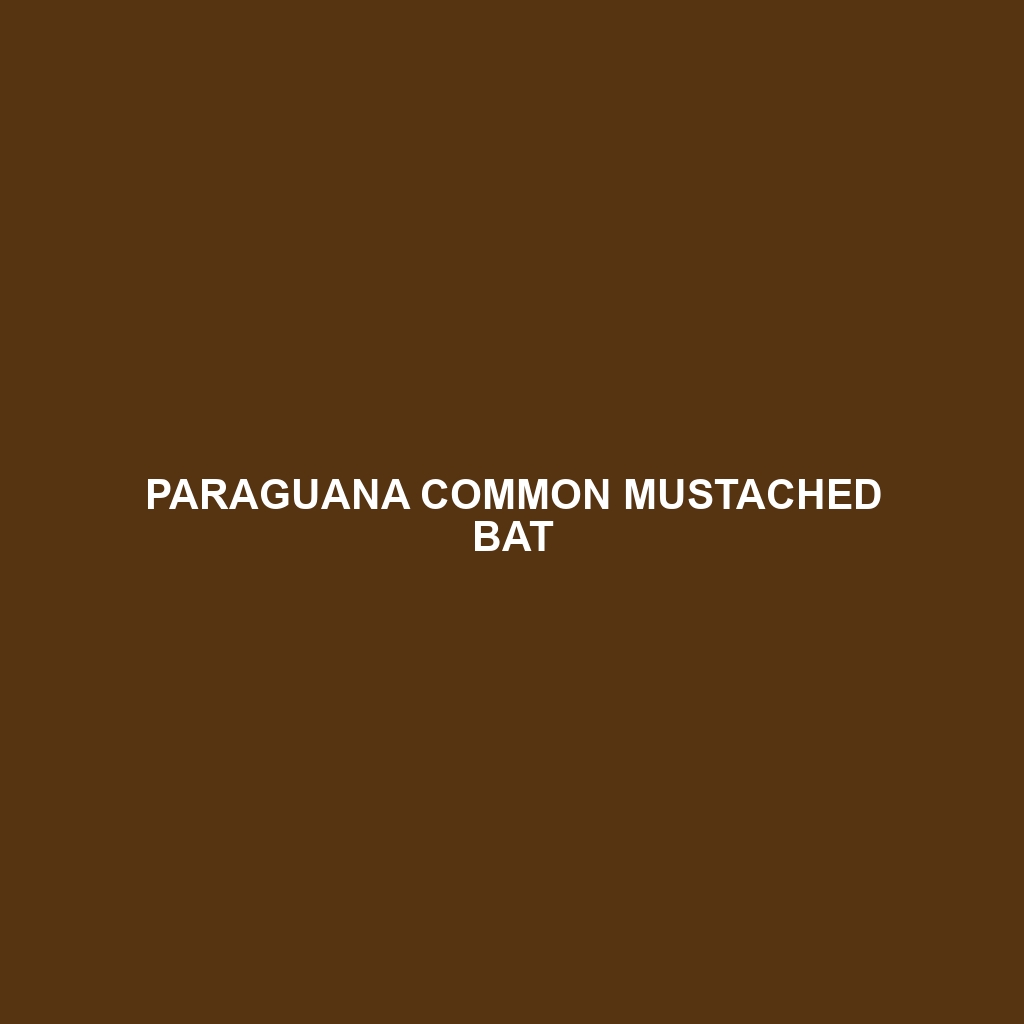Mexican Common Mustached Bat (Scientific Name: )
Habitat
The Mexican Common Mustached Bat is primarily found in a variety of regions across Mexico and parts of Central America. This species favors tropical and subtropical environments, often inhabiting areas such as lush rainforests, arid regions, and even urban spaces where suitable roosting sites are available. The bat is commonly spotted in caves, foliage, and man-made structures where it can find shelter and access to foraging grounds.
Physical Characteristics
Mexican Common Mustached Bats are medium-sized with a wingspan that typically ranges from 25 to 30 cm (10 to 12 inches). They exhibit characteristic features including a unique mustache-like tuft of fur, which is a distinguishing trait that contributes to their name. Their fur coloration varies from reddish-brown to grayish tones, providing excellent camouflage against their forest habitats. The ears are relatively large, aiding in their echolocation abilities.
Behavior
This species is primarily nocturnal, engaging in foraging activities during the night. The Mexican Common Mustached Bat has a social structure and often roosts in groups, which can range in size from small clusters to larger colonies. They are known for their agile flight patterns and use echolocation to navigate and hunt for prey.
Diet
Mexican Common Mustached Bats primarily feed on a diet of insects, including moths, beetles, and other small invertebrates. They play a vital role in controlling insect populations, making them essential for maintaining ecological balance. Their foraging habits often lead them to hunt in the understory and canopy of forests, where they capture their prey in mid-air.
Reproduction
The reproductive habits of the Mexican Common Mustached Bat are notable, as they typically breed once a year. Breeding season generally occurs in the warmer months, with females giving birth to a single pup after a gestation period of approximately 60 days. Mother bats are known to form crèches, where several pups are grouped together for warmth and safety, allowing mothers to forage more efficiently.
Conservation Status
As of the latest assessments, the Mexican Common Mustached Bat is classified as Vulnerable. Threats to its population include habitat loss due to deforestation, urbanization, and pesticide use, which impacts their food supply. Conservation efforts are crucial to protect this species and its natural habitat.
Interesting Facts
One fascinating aspect of the Mexican Common Mustached Bat is its impressive capacity for echolocation, enabling it to detect objects and prey in complete darkness. Additionally, this species has been observed displaying complex social interactions and communication methods within its colonies.
Role in Ecosystem
The Mexican Common Mustached Bat plays a crucial role in its ecosystem as a natural pest control agent. By consuming large quantities of insects, it helps maintain the health of agricultural environments and natural habitats alike. Their foraging behaviors also promote pollination for certain plant species, further highlighting their importance in biodiversity.

